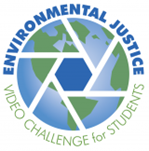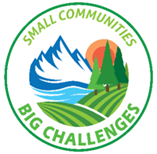Using Challenges and Prizes to Create Opportunities for Change in Communities
Published November 28, 2023
From soil lead contamination in Santa Ana, California, to extreme heat in Philadelphia, communities face their own unique environmental challenges. People who are directly affected by these local issues are often well positioned to help identify innovative solutions. Recognizing the creative potential in these communities, EPA has used its Challenges and Prizes program to crowdsource creative, community-led solutions that help address critical environmental issues.
Prize competitions have gained support across federal agencies as a way to promote innovation and accelerate problem solving. Many of EPA’s prize competitions have been focused on tapping the creativity of experts in their fields; for example, challenging engineers to design sensors that better characterize wastewater or asking scientists to develop the next generation of fertilizers. However, EPA has expanded the use of its Challenges and Prizes program to focus on promoting community engagement in environmental solutions, especially in communities with environmental justice concerns. By crowdsourcing solutions directly from communities, EPA can leverage the ingenuity of the public to develop solutions that are tailored to specific communities while also building the capacity necessary for the community to address their most pressing environmental problems.
Here are a few highlights from some of EPA’s community-focused challenges.
Environmental Justice Video Challenge for Students

EPA has engaged the next generation of environmental problem solvers-- students--to help address complex environmental and public health challenges. By participating in prize competitions, students help EPA empower communities to reach their environmental justice goals. In Phase 1 of the Environmental Justice Video Challenge for Students, EPA challenged university students to create a video demonstrating innovative approaches using data and publicly available tools to identify environmental justice issues in a select community. Then, in the second phase of the challenge, the students partnered with community organizations to propose community capacity building strategies that addressed these local environmental justice issues.
The first-place winner in both phases of the competition was a team of students from the University of California, Irvine, who partnered with Orange County Environmental Justice (OCEJ) to address soil lead contamination in Santa Ana, California. Working with OCEJ, the student team created maps of historical traffic patterns in the city by analyzing aerial images dating back to 1906. They found that areas that had historically hosted a dense road network had higher levels of soil lead contamination today, likely due to decades of pollution from leaded gasoline.
In the second phase of the challenge, the students again worked with OCEJ to develop a community led bioremediation strategy to address this soil lead pollution. They proposed working with OCEJ to train a network of community members to become “soil practitioners” who would be able to use native plants and fungi to absorb lead from contaminated soil near their homes. This strategy is a recognized approach for removing soil lead, and training Santa Ana residents to use this approach would empower those who are most affected by the contamination to work toward a solution.
EPA awarded a prize of $20,000 to the students for their first-place win in phase 1 and a prize of $60,000 to the students and Orange County Environmental Justice for their first-place win in Phase 2. Other winners included groups mapping oil wells near homes in California, proposing a place-based environmental justice education program in Eastwick, Philadelphia, and addressing the impacts of a landfill in Charles City County, Virginia.
Let’s Talk About Heat Challenge

As the climate changes, extreme heat events are becoming more commonplace. Communities that have been historically underserved are particularly vulnerable to extreme heat, as they tend to be concentrated in neighborhoods with fewer trees and less greenery, which can increase heat risk. As extreme heat becomes a more common issue, communities need clear messages about the risks of extreme heat and how they can protect themselves in the short and long term. To help address this need, EPA and co-sponsors launched the Let's Talk About Heat Challenge, a national competition to identify innovative and effective communication strategies that inform vulnerable people of the risks of extreme heat and offer ways to keep safe during the hottest days.
EPA selected ten winners from across the country targeting audiences including farmworkers, people who are unhoused, and those living in neighborhoods that face greater environmental exposures and public health risks. Here are a few highlights from the competition:
- Achieving Resilient Communities (ARC) Ventura Project Partners developed a strategy that works with local community organizers to expand outreach to farmworkers about ways to protect their health during heat waves and forest fires. The team developed outreach materials in indigenous languages and audiovisual formats.
- The City of Phoenix, Arizona, conducted a direct outreach campaign to distribute heat relief supplies, share information about community cooling resources, and help connect residents to other critical social services including shelter, housing, identification, food, hygiene facilities, and transportation.
- Trust for Public Land focused on using public art from local artists to engage with residents of urban heat islands in Philadelphia about extreme heat.
Each winner received a prize of $12,000, and EPA and challenge co-sponsors continue to work with all 10 challenge winners to share their heat safety messages with communities across the country.
Small Communities, Big Challenges

Rural communities across America face unique environmental health concerns, which are often compounded by barriers such as limited resources and geographic isolation. To better understand environmental health in rural communities, EPA recently launched the Small Communities, Big Challenges competition. This innovative prize competition encourages rural local governments to share how they have collaborated with their communities to identify the environmental public health issues that are important to them. Communities are the best experts on their own needs; they know how their friends and families are being affected by environmental issues, and local governments can actively engage with their constituents to bring these issues the attention that they deserve. The goal of Small Communities, Big Challenges is to showcase community-government partnerships that have successfully identified environmental health issues in rural communities, offering a blueprint for other governments looking to perform similar work. In the long term, the strategies for engaging with rural communities and the environmental issues that are identified by communities in this challenge may inform EPA research and engagement activities.
These examples highlight a growing slate of community-focused challenges at EPA. In addition to the challenges highlighted above, EPA has sponsored competitions seeking innovative stormwater solutions on college campuses, communications about harmful algal blooms in Kansas City, and videos that highlight people’s day-to-day experiences with electric vehicles. Community-focused challenges benefit both EPA and the communities themselves, harnessing EPA resources and the ingenuity of local community members to develop targeted environmental solutions in their neighborhoods.
If you are interested in learning about more upcoming Challenges, visit EPA Challenges & Prizes.
This story was written by Seamus Caslin, an ORAU contractor working with the Innovation team in EPA’s Office of Research and Development. The team oversees EPA’s Challenges and Prizes program.
